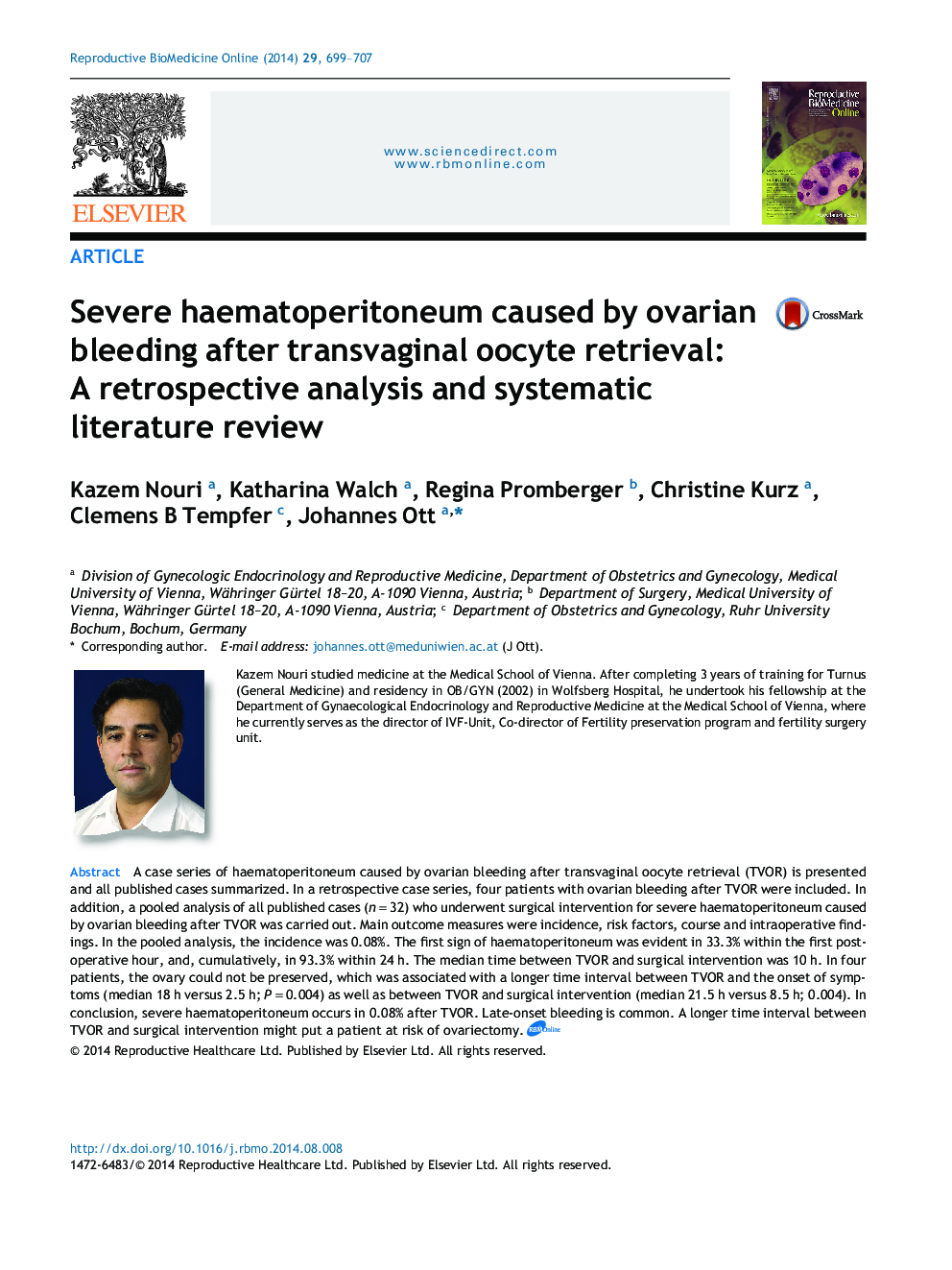| Article ID | Journal | Published Year | Pages | File Type |
|---|---|---|---|---|
| 6188955 | Reproductive BioMedicine Online | 2014 | 9 Pages |
â¢Severe hematoperitoneum due to ovarian bleeding after transvaginal oocyte retrieval is rare but potentially life-threatening.â¢A late-onset is common and may be associated with an increased risk for ovariectomy.
A case series of haematoperitoneum caused by ovarian bleeding after transvaginal oocyte retrieval (TVOR) is presented and all published cases summarized. In a retrospective case series, four patients with ovarian bleeding after TVOR were included. In addition, a pooled analysis of all published cases (n = 32) who underwent surgical intervention for severe haematoperitoneum caused by ovarian bleeding after TVOR was carried out. Main outcome measures were incidence, risk factors, course and intraoperative findings. In the pooled analysis, the incidence was 0.08%. The first sign of haematoperitoneum was evident in 33.3% within the first postoperative hour, and, cumulatively, in 93.3% within 24âh. The median time between TVOR and surgical intervention was 10âh. In four patients, the ovary could not be preserved, which was associated with a longer time interval between TVOR and the onset of symptoms (median 18âh versus 2.5âh; P = 0.004) as well as between TVOR and surgical intervention (median 21.5âh versus 8.5âh; 0.004). In conclusion, severe haematoperitoneum occurs in 0.08% after TVOR. Late-onset bleeding is common. A longer time interval between TVOR and surgical intervention might put a patient at risk of ovariectomy.
